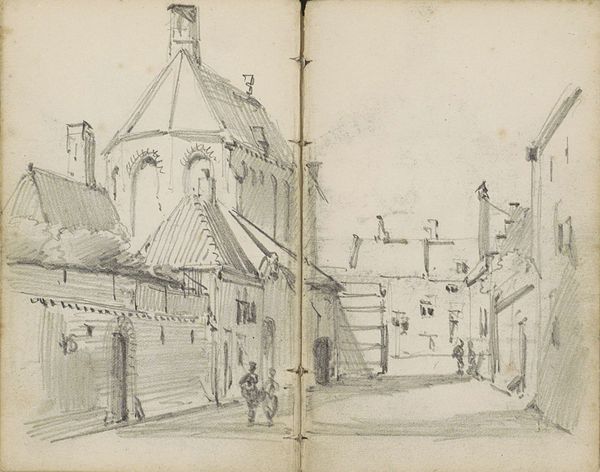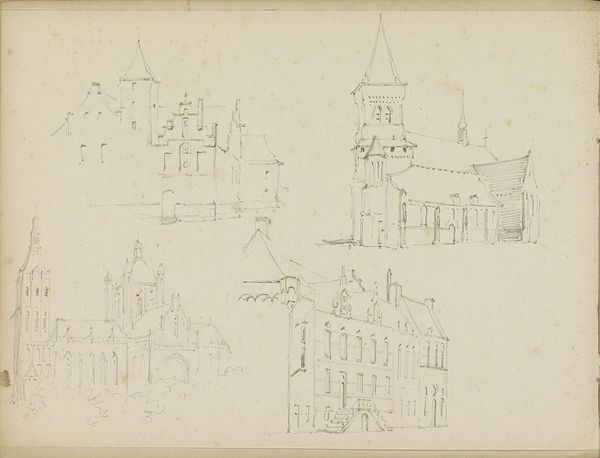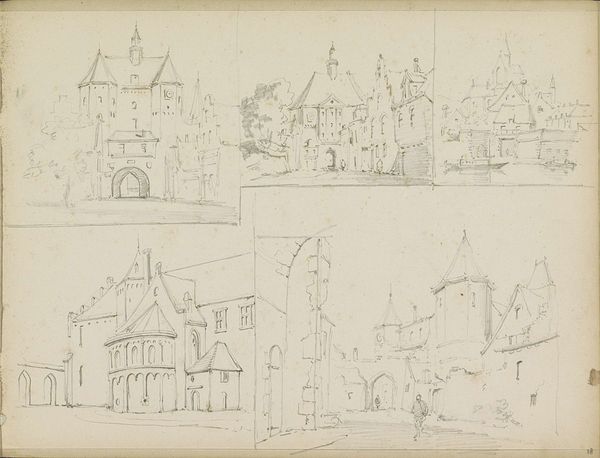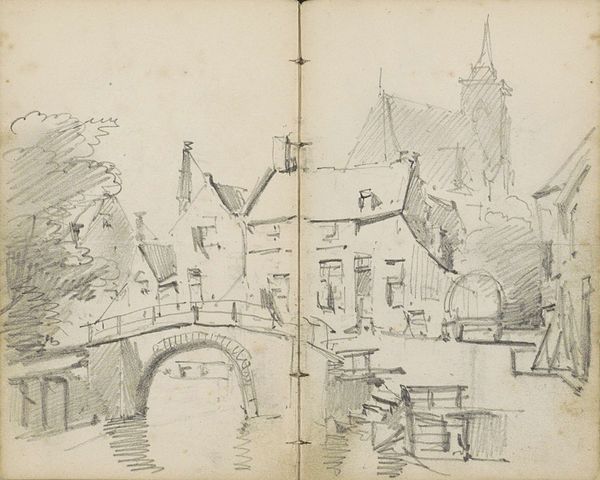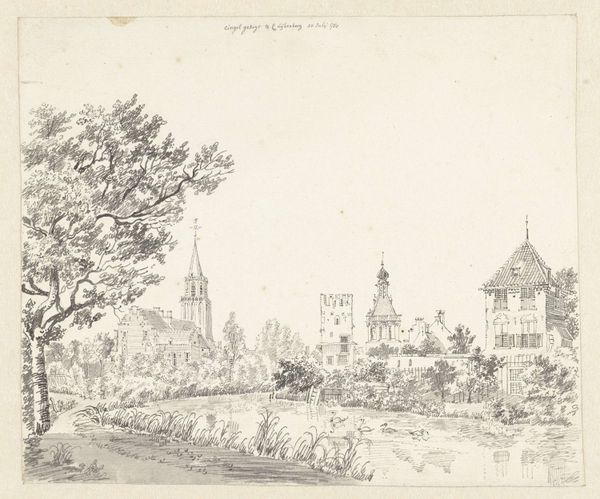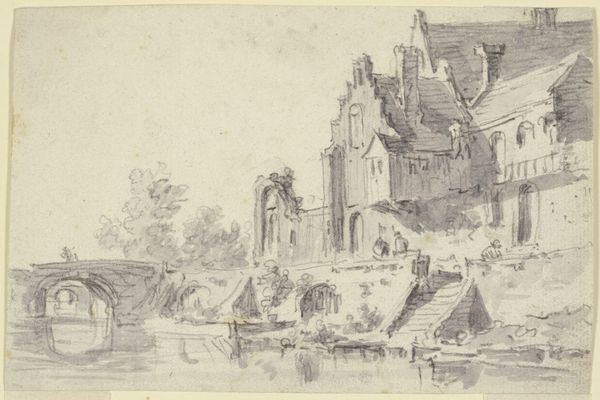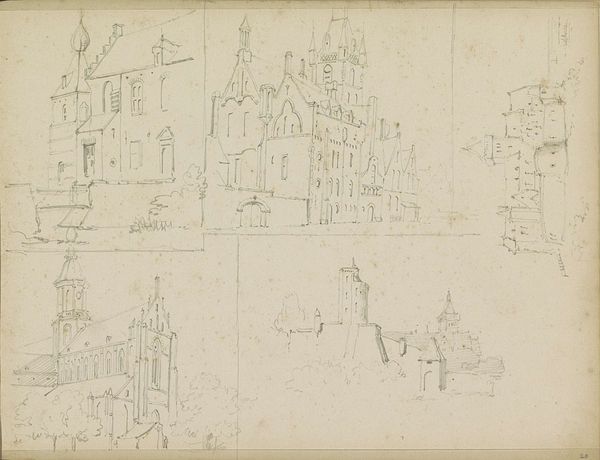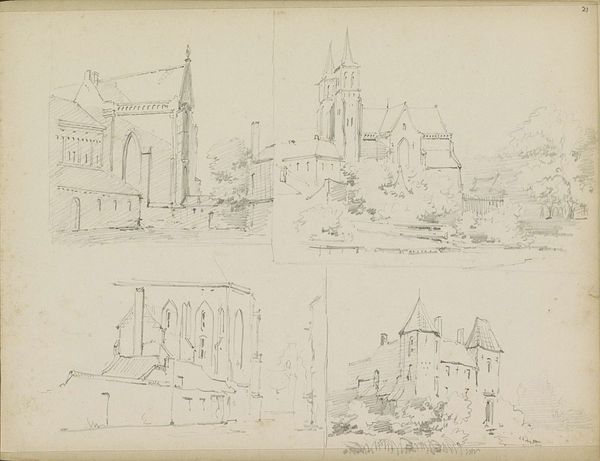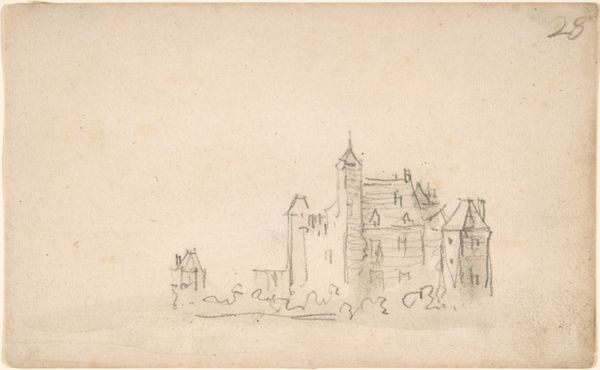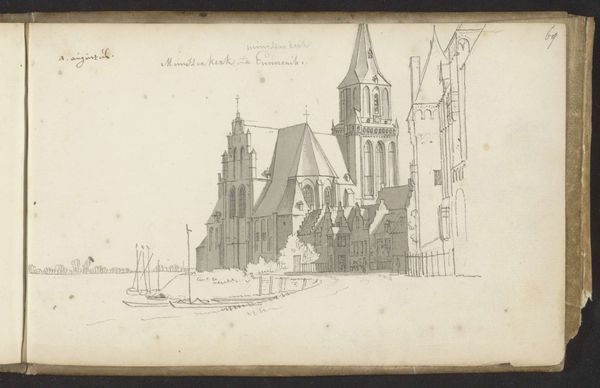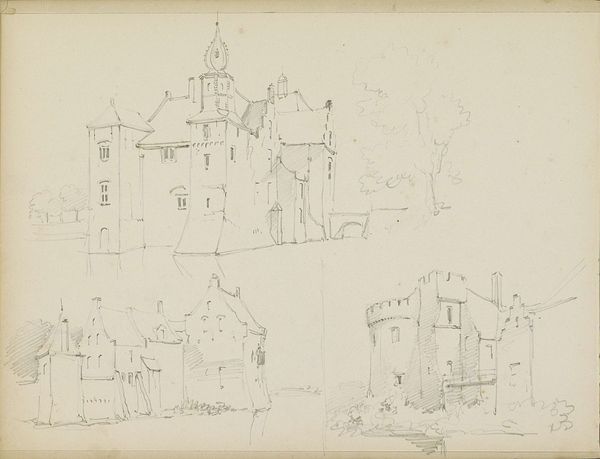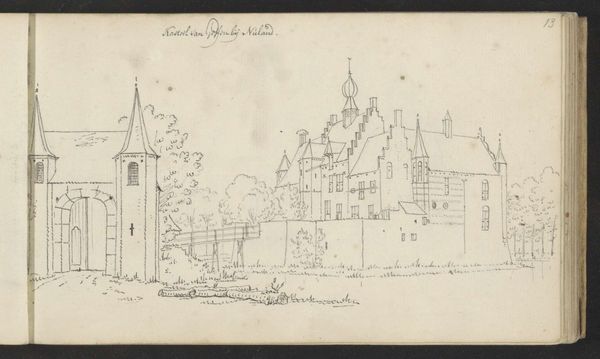
drawing, pencil
#
drawing
#
quirky sketch
#
pen sketch
#
sketch book
#
landscape
#
personal sketchbook
#
sketchwork
#
pen-ink sketch
#
pencil
#
pen work
#
sketchbook drawing
#
cityscape
#
storyboard and sketchbook work
#
sketchbook art
#
realism
Copyright: Rijks Museum: Open Domain
Curator: Welcome. We are looking at “Dorpsgezicht met figuren en een kerktoren,” or “Village View with Figures and a Church Tower” by Willem Koekkoek, created sometime between 1849 and 1895. It’s currently held here at the Rijksmuseum. Editor: My immediate impression is the sketch’s raw energy, even the open sketchbook format. It's intimate, like we're glimpsing the artist’s personal process. Curator: Indeed. Koekkoek was known for his idealized cityscapes, but this drawing offers something more grounded. It's a study, perhaps a preparatory work. Look at the pencil strokes, how they build the forms and capture the light. It speaks to the working methods of artists in that era. Sketchbooks were not only for planning but also important parts of the art-making production and distribution. Editor: I'm particularly drawn to the church tower dominating the composition. Churches were powerful symbols within Dutch society. By placing it prominently, Koekkoek acknowledges the social fabric of this village, especially given the economic power and moral authority churches enjoyed at that time. Curator: Exactly. While the sketch captures a realistic depiction of a village scene, we need to consider the artistic choices he’s making. Koekkoek came from a family of painters. His family had specific painting styles that became products on the market, to meet an audience demand for landscapes in a certain style. The church tower isn’t just a building; it is also representative of those dynamics. Editor: What I appreciate here is how this seemingly simple sketch reflects the intersection of art, social structures, and economics. The artist, materials, the way it represents places that shape how a piece of art will be perceived by the public… Curator: It’s fascinating to consider how the production methods and the social context intersect. Thank you. Editor: Thank you, this was insightful.
Comments
No comments
Be the first to comment and join the conversation on the ultimate creative platform.
